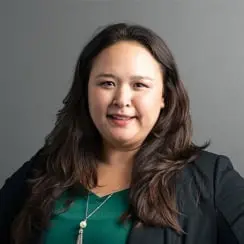 | 1.5 LU |
 | 1.5 LU |
As national headlines call attention to a pipeline predicament, worsening staff burnout, and disparities in learning, schools have the opportunity and responsibility to activate their campus as a powerful tool to foster educator resilience and recruit and keep top talent as empowered partners in student success. To better understand the unique perspective of educators within this exceptionally challenging social, political, and educational landscape, Corgan conducted an in-depth, national study of educators. 36 in-depth interviews and 1,000 survey responses from K-12 teachers working across the United States captured the pain-points, experiences, and aspirations of our nation’s educators, yielding key insights for educator-supportive campus design and administrative practices to help them shape the next generation. Bringing data, experiential insights, and responsive design strategies together, this research-based session will connect data and insights from Corgan’s Design Lessons from Teachers Report to meaningful, targeted design responses focused on supporting educator resilience. Session attendees will be engaged in a problem-solving, empathy-building activity aimed at bringing the data report to life through real-world scenarios.
Learning Objectives:

Lane is a Senior Associate at Corgan, dedicated to providing research-based design solutions that advance education facility design. He excels at seeing the big picture and focuses on communication between educators, learners, and the community to bring their vision to life and meet the ever-changing demands of society, both current and future. Lane is a registered architect with a Master of Architecture from Kansas State University.

Beverly is a Vice President at Corgan with over fifteen years of experience developing innovative learning environments that prioritize student engagement and wellbeing. Her innate ability to translate the complex needs and visions of educators and students into meaningful design solutions makes her a sought-after resource to clients. Beverly is a registered architect in the State of Texas and received Master of Architecture and Bachelor of Architectural Studies degrees from University of Louisiana Lafayette.
This track elevates Research on learning and learning environments and focuses on methodology, findings, and implications for practice. Tangible takeaways are encouraged, including tools and resources that support innovation and improvements to learning environments. There is Art in how we utilize Science to improve our design outcomes and our design and research process. To this end, dissemination of research findings is a priority so that learning environments are re-imagined and enhanced based on evidence and measured impact, not based on trends.
Primary Core Competency
Community Engagement: Leads the internal and external communities through a discovery process that articulates and communicates a community-based foundational vision, forming the basis of a plan for the design of the learning environment. The vision is achieved through a combination of rigorous research, group facilitation, strategic conversations, qualitative and quantitative surveys and workshops. Demonstrates the skill to resolve stakeholder issues while embedding a community's unique vision into the vision for its schools.